John Hurrell – 15 August, 2009
Frater's removed shapes are often undulating lyrical arabesques or skinny weedy slashes and they provide a sort of frame for the carpet-layer's accidental ‘artistry' - on a concrete ‘canvas' that peeks through.
This project by Frater continues the series of installations involving carpet he has created for venues like the ARTSPACE office and HSP in Christchurch. At Te Tuhi it is different though. He has been given a gallery with a floor covered in impeccable dark blue weave, and allowed to cut into it, remove shapes and fold sections back. The result has been to expose sections of the concrete floor where splodges of brushed-on glue were used to fasten the carpet.
Peeling away layers of carpet has revealed dried gluey incrustations normally flattened out and hidden after the wet adhesive was initially brushed onto the floor. Broken away, encrusted little islands have formed on the carpet’s folded back, lined underside when Frater later yanked his Matissean-shaped sections away.
This pale brown residue is mostly seen on the concrete and is surprisingly beautiful with its delicate transparent hues. Parallel bristle marks abound within the hardened translucent paste, plus splashes of spilled white wall paint and other more watery stains. There is an archaeology going on here on the floor that relates to what Frater’s ACFA colleague Patrick Lundberg has been doing on gallery walls, but more obvious. The marks are more spectacular.
Frater’s removed shapes are often undulating lyrical arabesques or skinny weedy slashes and they provide a sort of frame for the carpet-layer’s accidental ‘artistry’ - on a concrete ‘canvas’ that peeks through. There is an odd rivalry going on between inner and outer marks separated by several years. A bizarre, inadvertent collaboration; a duet.
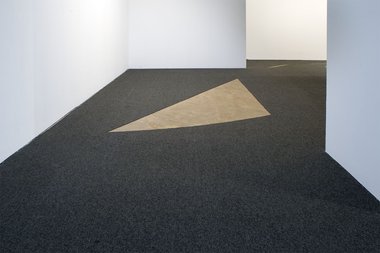
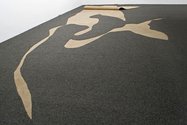
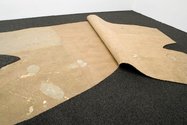
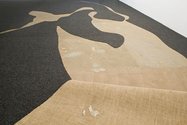
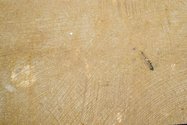
 Two Rooms presents a program of residencies and projects
Two Rooms presents a program of residencies and projects Advertising in this column
Advertising in this column



This Discussion has 0 comments.
Comment
Participate
Register to Participate.
Sign in
Sign in to an existing account.